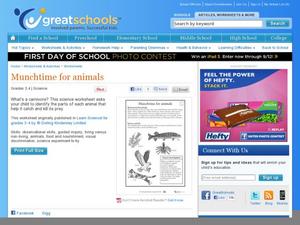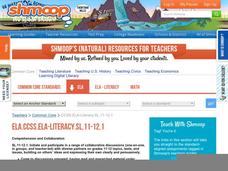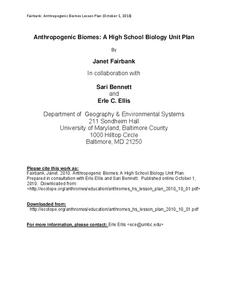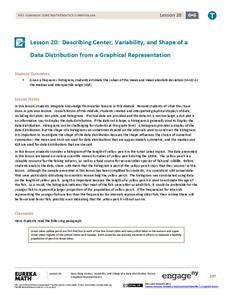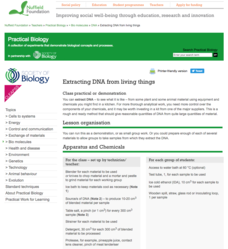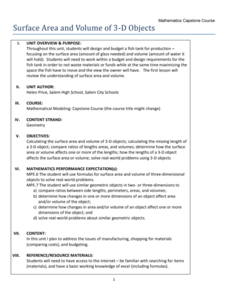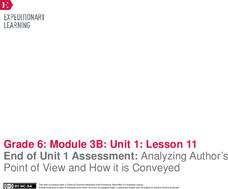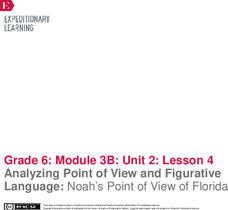DK Publishing
Learning 2 - Write the Word
Focus on the number two with beginning counters as they review its word form, number form, and value. First, learners practice printing the word two, tracing it before writing it once on their own. Next, they draw two bunnies and then...
Curated OER
Animal Homes
Match animals to their environments with a cute lab activity. Kids draw a line between each animal, such as a fish, a rabbit, and an ant, to the place where it lives. For hands-on practice, a science investigation instructs learners to...
Curated OER
Munchtime for animals
Which animals eat meat to stay alive? Third graders group fish, hawks, and cats into carnivores and herbivores. An extended activity prompts kids to cut out magazine pictures of different animals according to the foods that they eat.
Curated OER
¡No robes los peces!
Your beginning Spanish speakers read the short reading passage about a girl, her cat, and a fish. After reading, have them answer the three multiple choice questions and the one short answer question provided. The answers are on the...
Shmoop
ELA.CCSS.ELA-Literacy.SL.11-12.1
You want your class to meet all of the Common Core standards, and here is one way to tackle the first speaking and listening standard. Given a theme to focus on from "How Much Land Does a Man Need?" by Leo Tolstoy, small groups come up...
Global Change
Impact of Climate Change on the Desert Pupfish
A fish that lives in the desert? You and your class can meet the desert pupfish as they examine its habitat, the role humans play in diminishing water supplies, and how climate change might impact this fishy friend. There are four short...
Scholastic
Study Jams! Changes in Ecosystems
Our scholarly friends head to the lake to go fishing and are unpleasantly surprised by the algae filling the water. They talk about primary and secondary succession as different ways that ecosystems are changed. Show the short video,...
Teacher's Guide
Incentive and Behavior Charts
Incentive and behavior charts abound in this packet, which features bears, ladybugs, cars, and fish. Good behavior is rewarded with stickers that kids can place on their "Beary Good Behavior Chart." A beary nice printable.
Reading Resource
/i/ Word List
Six silly chicks sit and fish with big strings and sticks. Help young readers develop the phonemic awareness skills needed to detect the sound structure of words and the vowel sounds in words with an exercise that asks them to identify...
Houghton Mifflin Harcourt
Colors All Around: Challenge Activities (Theme 2)
Color, color, everywhere. As part of a three-week study of color, kindergarteners create animal color cards, design pages for an class animal book, populate an underwater scene with colorful fish, and invent and name a new color.
Civil War Trust
Civil War Slang
Introduce a lesson on Civil War slang to your class of fresh fish. After looking at pictures from the Civil War and examining the list of slang terms, young historians write a letter to a family member as if they are a Union soldier or a...
Curated OER
Anthropogenic Biomes
If you teach a man to fish, he will never go hungry—or he will overfish and permanently damage the ecosystem? Address the traditional biomes as well as the human-included ecosystems and contrasts the biotic and abiotic factors in each....
NOAA
Biological Oceanographic Investigations – Through Robot Eyes
How can a robot measure the length of something when we don't know how far the camera is from the object? The lesson explains the concept of perspective and many others. Scholars apply this knowledge to judge the length of fish and the...
LABScI
Freezing Point Depression: Why Don’t Oceans Freeze?
Can you go ice fishing in the ocean? Learners examine the freezing point of different saltwater solutions. Each solution has a different concentration of salt. By comparing the freezing points graphically, they make conclusions about...
EngageNY
Describing Center, Variability, and Shape of a Data Distribution from a Graphical Representation
What is the typical length of a yellow perch? Pupils analyze a histogram of lengths for a sample of yellow perch from the Great Lakes. They determine which measures of center and variability are best to use based upon the shape of the...
Science 4 Inquiry
At the Top: A Bald Eagle's Diet
Bald eagles are opportunistic predators and eat fish as well as raccoons and other mammals. Pupils learn about bald eagle diets through a simple simulation and videos. They collect and analyze data to understand the adaptability of this...
Nuffield Foundation
Extracting DNA from Living Things
Help! Someone's trying to take my DNA! An interesting lab experiment has scholars use basic materials to extract DNA. By applying ethanol, cold water, and a protease enzyme, like pineapple juice, they pull strands of DNA from peas,...
Radford University
Surface Area and Volume of 3-D Objects
Don't let the class tank the project. After reviewing formulas for surface area and volume, pupils design fish tanks that maximize volume. They research cost of materials online and must meet a budgetary constraint when creating their...
EngageNY
End of Unit 1 Assessment: Analyzing Author’s Point of View and How it is Conveyed
One step at a time. Scholars complete the end of unit assessment by reading pages 70–75 of World without Fish and analyzing each paragraph one at a time. They highlight key words leading to author's point of view and complete a point of...
EngageNY
Analyzing Point of View and Figurative Language: Noah’s Point of View of Florida
Fishing for words. Scholars search for unfamiliar words in pages 27-29 of Flush, place them in their word catchers, and complete part of Noah’s Point of View graphic organizer. After identifying figurative language, learners analyze tone...
EngageNY
Introduction: The Ideas of Charles Darwin
Piece by piece ... Scholars read the text World without Fish by breaking the text into pieces. They identify challenging words and determine the gist of each section as they read. They then work together in triads to answer...
EngageNY
Mid-Unit 3 Assessment, Part 2: Explaining How New Information Connects to the Topic
Let's talk it out. Using the resource, scholars work in triads to discuss how their research has deepened their understanding about sustainable fishing. Next, pupils engage in a whole-class discussion to consider their next steps toward...
Curated OER
/sh/ Sound Work
What letters create the /sh/ sound? Have your elementary learners study the sound, write different words that use the sound in their letter boxes, and read One Fish, Two Fish, Red Fish, Blue Fish! After this mini-lesson, can your...
Curated OER
Bycatch
Bycatch is the unwanted and discarded marine life caught during commercial fishing. Young marine scientists review bycatch litigation and analyze graphs of bycatch data and answer questions about it. This raises awareness while...
Other popular searches
- Fisheries
- Fraction Fishing
- Anansi Goes Fishing
- Fishing Industry
- Commercial Fishing
- Fishing for Numbers
- Fisheries and Forestry
- Fishing Regulations
- Fisheries Management
- Recreational Fishing
- Fishing Methods
- Fishing Community




